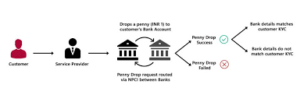Numerous banks have dramatically cut back on the number of physical branches due to the fact that a vast majority of us have been relying on online banking for our daily financial transactions. The ability to withdraw small amounts of cash at the grocery store eliminates the need for a trip to the bank. This situation is mutually beneficial: banks are able to lower their operating expenses and, in turn, offer us, the online banking users, improved terms as a result of these savings.

With the rapid rise in cyber threats and continuous reports of successful hacking incidents, it’s natural to wonder about the safety of online banking.
Continue reading to discover everything you need to know about online banking and how to enhance the security of your online banking account.
In recent years, many financial institutions have significantly reduced the number of their physical branches. This shift can be attributed to the fact that an overwhelming number of customers have turned to online banking for their everyday financial needs. The convenience of being able to withdraw small sums of money while shopping at the grocery store has rendered trips to the bank less necessary. This evolution in banking is a win-win scenario: banks are able to decrease their operational costs, which in turn allows them to provide better services and terms to those of us who utilise online banking.
However, with the surge in cyber threats and an increasing number of reports about successful hacking attempts, it’s completely understandable to feel apprehensive about the safety of conducting financial transactions online.
If you continue reading, you will uncover essential information about online banking and learn valuable strategies for bolstering the security of your online banking account.
In the realm of online banking, one fundamental principle reigns supreme: transactions can only be conducted with proper authorisation. This means that once you log into your banking account, any actions you wish to undertake must first be approved by you. In the context of personal banking, this approval process has evolved to prominently feature the use of a transaction authorisation number, commonly known as TAN. Over time, the methods for obtaining this essential code have diversified, reflecting advancements in technology and security practices.
Gone are the days when banks printed and sent out lengthy lists of TANs—a practice that has become increasingly rare. Instead, we find ourselves in an era where eTANs and mobile TANs have taken centre stage. These modern solutions enable customers to receive text notifications prompting them to authorise transactions or request confirmation through dedicated banking applications. Such innovations have streamlined the banking experience while enhancing security measures.
‘

Moreover, many financial institutions now provide customers with TAN generators—compact devices designed to create a unique TAN for each online transaction. These generators are celebrated for their robustness in safeguarding sensitive information. The dual-device system employed in these processes ensures that separate tools are utilised for entering, displaying, and confirming transactions. This layered approach makes it exceedingly difficult for cybercriminals to implant malicious software or interfere with fund transfers. For instance, methods like sm@rtTAN and chipTAN exemplify this secure process.
When we shift our focus to corporate banking, particularly in scenarios involving substantial financial transactions or bulk processing—such as payroll—the stakes are considerably higher. In these environments, the potential ramifications of even the tiniest oversight during the authorisation phase can be dire. Consequently, businesses often turn to specialised financial software, commonly referred to as client programs, to manage their banking needs. These tools are equipped with enhanced features tailored to mitigate risks and ensure accuracy in handling significant sums of money across various transactions.
In essence, while the landscape of online banking continues to evolve, one truth remains: without proper authorisation, the doors to online banking remain firmly closed.
In the realm of online banking, one fundamental principle stands unwavering: transactions cannot proceed without proper authorisation. Once you log into your online banking account, you must sanctioned any actions you wish to take, as this authorisation is essential for the bank to accept and execute your requests. In the landscape of personal banking, the use of a Transaction Authorization Number, or TAN, has become standard practice. This TAN can manifest in several different formats, each with its own advantages and security features.
Gone are the days when banks would send customers a printed list of TANs—a method that has become increasingly rare. Instead, we see the rise of eTAN and mobile TAN systems, which have gained significant traction among users. With these modern methods, a notification is sent to your mobile device, prompting you to authorise a transaction via a text message, or you may be required to confirm the payment through a dedicated banking application on your smartphone. This shift not only enhances convenience but also bolsters security.
Additionally, many financial institutions provide TAN generators to facilitate the authorisation process. These compact devices are designed to generate a unique TAN for each online transaction, thus offering a high level of security. The dual-device setup employed by these generators—one for input and another for display—makes it exceedingly difficult for cybercriminals to deploy banking Trojans or interfere with funds transfers. Such TAN generators are often utilised in conjunction with protocols like sm@rtTAN or chipTAN, further ensuring the integrity of the transaction process.

When we turn our attention to corporate banking and the intricate world of multi- and interbank transactions, where substantial sums of money and bulk operations like payroll processing come into play, the need for meticulous authorisation procedures becomes even more critical. In these scenarios, even the slightest oversight during the authorisation process could yield catastrophic results. To mitigate such risks, specialised financial software, often referred to as client programs, is employed. This sophisticated software is designed to navigate the complexities of corporate financial transactions while maintaining a rigorous standard of accuracy and security throughout the authorisation process.
The Rise of Online Banking: Unveiling Its Benefits
While the onset of the Corona pandemic certainly accelerated the adoption of online banking, it was not solely responsible for its emergence. In fact, the shift towards digital banking had been steadily gaining momentum well before the world faced strict social distancing measures that limited access to physical bank branches. The reasons for this growing preference for online banking are pretty compelling and easy to understand.
Imagine having the ability to monitor your account activity almost instantl, without having to wait for the bank to open its doors. With online banking, you can track all your transactions as they happen, allowing you to manage your finances with unparalleled ease and flexibility, regardless of traditional banking hours. No more rushing to the bank before closing time; everything you need is just a click away.
Moreover, account statements, which often pile up in paper form, are now conveniently delivered straight to your digital inbox. Gone are the days of frantically searching for misplaced documents or incurring fees due to lost statements. With online banking, these essential records are securely stored in your account mailbox, available for retrieval at any time you require them.
Transferring funds has also become remarkably straightforward. Whether you’re looking to send money to someone, establish standing orders for recurring payments, or move funds from a fixed-term deposit to your current account, online banking facilitates these transactions seamlessly. The convenience of managing your finances online cannot be overstated.
In addition to these functionalities, online banking provides peace of mind regarding security. If you ever find yourself in the unfortunate situation of losing your credit or debit card, the ability to block your account swiftly can help prevent further financial loss. This feature empowers users to take immediate action and protect their assets without unnecessary delays.
In essence, the advantages of online banking are clear and multifaceted. As we continue to navigate an increasingly digital world, these benefits only serve to enhance our banking experiences and redefine how we interact with our finances.
The security of online banking is a pressing concern in today’s digital landscape. With alarming frequency, we find ourselves bombarded by news reports or notifications from our financial institutions about the latest cyber threats targeting online banking accounts. These accounts have become particularly appealing to hackers, who view them as prime opportunities for profit. As these malicious actors refine their techniques, the danger intensifies, often catching unsuspecting individuals off guard as they unwittingly fall victim to these scams.
One of the most significant threats to online and mobile banking is phishing. This tactic involves cybercriminals’ systematic efforts to deceive individuals into disclosing their login credentials. When successful, these phishing schemes grant hackers unauthorised access to personal accounts, enabling them to execute fraudulent financial transactions with ease.
For those interested in safeguarding themselves, we encourage you to explore our blog post, which delves into the intricacies of phishing attacks, offers strategies for enhancing your security, and outlines the numerous variants of these deceptive practices that are unfortunately all too common.

Now, turning our attention to Transaction Authentication Numbers (TANs), the protocols surrounding their use are under constant scrutiny. Regulatory bodies continue to impose new guidelines and mandatory measures on banks to uphold the integrity of online banking amidst a surge in cybercrime. TAN generation processes are crucial components of the security frameworks that banks employ.
Historically, the traditional PIN/TAN approach involved banks sending customers a physical list of TANs via mail, with each number remaining valid indefinitely. Users had the liberty to select any available TAN for their transactions. However, given that these lists have been compromised over time, their usage has significantly declined.
Currently, utilising a TAN generator is regarded as one of the safest methods for transaction authorisation. Yet, even this system is not immune to attacks. A concerning trend emerging in the cyber world is the rise of man-in-the-middle attacks, where cybercriminals position themselves between the user and the bank, intercepting sensitive information.
As we navigate this complex landscape of online banking security, it becomes increasingly clear that vigilance and awareness are essential in protecting ourselves against evolving threats.
Understanding the workings of online banking can feel daunting, but with the right precautions, you can significantly bolster your security. While mobile and online banking may never achieve complete safety, there are steps you can take to enhance your protection. One essential measure is ensuring you have robust antivirus software in place, which acts as a crucial line of defence against potential threats.
Additionally, it is vital to keep the operating systems of all your devices—whether a PC, Mac, smartphone, or tablet—up to date. Regular updates often address newly identified vulnerabilities, helping to secure your devices against emerging risks.
To further safeguard your online banking experience, consider setting a daily transaction limit with your bank. This measure can prevent a total depletion of your account in the event of unauthorised access. It’s also wise to regularly review your account statements and transactions. Should you notice any unfamiliar activity or anything that raises your suspicion, don’t hesitate to contact your bank immediately.
When it comes to your banking credentials, it’s imperative to treat them with utmost care. Just as you would shield your PIN from prying eyes at an ATM or bank counter, confidentiality is paramount in the digital realm as well, particularly regarding Transaction Authentication Numbers (TANs).
Be judicious about sharing your online banking information. Whether it’s in person, scribbled on a piece of paper tucked away in your wallet, or sent via messaging apps like WhatsApp, disclose your International Bank Account Number (IBAN) and login details only when necessary.

Whenever possible, it’s best to conduct your online banking exclusively on your devices within the safety of a secure Wi-Fi network. After each session, make sure to log out and consider clearing your device’s cache to eliminate any traces of your activity. However, many individuals may not always practice this level of vigilance.
One effective tool to enhance your online security is a Virtual Private Network (VPN). For instance, Avira Phantom VPN stands out as a reputable option. Even its free version can significantly bolster the security of the data you transmit online by encrypting it, which extends to your online banking activities as well. With this free service, you can enjoy up to 500 MB of data each month; for those seeking unlimited protection, the premium version offers just that.
In conclusion, while online banking carries inherent risks, taking these preventive measures can provide peace of mind and help secure your financial transactions in an increasingly digital world.
Selecting a strong password is of paramount importance in today’s digital landscape. Whenever you create a new account, you’re often greeted with suggestions on how to craft a secure password. By now, you’re likely familiar with the essential characteristics of a robust password: it must be distinct for each account and should consist of a mix of at least eight characters, including letters, numbers, and special symbols. Additionally, it’s crucial to remember that simply changing your passwords periodically isn’t enough; this practice should extend beyond just your online banking activities.
Managing multiple passwords across various platforms can become a daunting task over time. This is where our foremost recommendation comes into play: consider utilising a password manager. Take, for instance, Avira Password Manager. With this tool, you only need to commit one master password to memory. The manager will take care of generating unique and robust passwords for all your different online accounts. This not only enhances the security of your online banking profile but also fortifies your protection while navigating the web or conducting transactions via your mobile device. By embracing such tools, you can alleviate the stress of password management and focus more on enjoying your online experiences with peace of mind.
When navigating the online banking landscape, it’s crucial to verify the presence of security certificates associated with your bank. Modern web browsers are equipped with features that display a certificate whenever you access your bank’s webpage. This certificate acts as a reassurance, indicating that an impartial authority—the entity responsible for issuing the certificate—has validated the authenticity of the information provided by your bank’s server.
A clear indication that your bank’s website is secure can be found in the form of a small padlock icon located in the address bar of your browser. By clicking on this icon, you can access further details about the security certificate and confirm the legitimacy of the website you are visiting.
In addition to confirming the security of your online banking activities, it’s essential to protect your home network by ensuring that your Wi-Fi connection is encrypted. The current standard for Wi-Fi security is known as WPA3 (which stands for Wi-Fi Protected Access 3). When your internet service provider sets up your router, they will typically provide you with a password that is at least 20 characters long, enhancing the security of your wireless network.
To further bolster your protection, customize your router settings. Make sure that your wireless network is configured to establish an encrypted connection and categorised as a “private network.” This will significantly reduce the risk of unauthorised individuals gaining access to your network.

However, even with these precautions in place, one of the most significant threats you may encounter is phishing. This deceptive tactic has become increasingly sophisticated, with cybercriminals relentlessly attempting to obtain sensitive information such as your online banking credentials through mass-distributed fraudulent emails. These messages can appear remarkably authentic, often mimicking the design and language used by legitimate institutions, making it easy to be misled.
It’s vital to remember that reputable banks will never request confidential information like your PIN, TAN, or account number via email. If you happen to receive any correspondence that raises suspicion or requests such sensitive details, it’s imperative to notify your bank immediately. However, do not engage with the instructions provided in these emails; instead, prioritise your security and remain vigilant against such scams.
Maxthon
Maxthon stands at the forefront of a transformative wave in cloud gaming, poised to redefine the landscape with its cutting-edge browser, meticulously crafted for the gaming community. At its essence, this browser is powered by an intricate array of algorithms designed to elevate speed and performance, creating a haven where gamers can truly thrive. These advanced technologies harmoniously collaborate to present stunning visuals while seamlessly eliminating any lag that might otherwise mar the gaming journey. For those seeking an all-encompassing immersive experience, this flawless integration transcends mere enhancements; it becomes an integral part of the gameplay, enriching every moment.

Yet, the prowess of Maxthon extends far beyond just captivating graphics. The browser employs sophisticated data management strategies that dramatically slash loading times between levels or game modes. As a result, players can plunge straight into the heart of the action, free from the frustration of extended waits, allowing them to savor every exhilarating second of their gaming adventures.
In addition to its exceptional speed and visual fidelity, Maxthon places a strong emphasis on reliable connectivity. Gamers can trust in a stable connection with minimal interruptions, whether they are embarking on solo quests or joining friends for online battles. This dedication to maintaining robust connections significantly enriches the overall gaming experience, ensuring that players remain engaged and connected.
One of Maxthon’s most notable attributes is its remarkable compatibility across a variety of devices. Regardless of whether you are using a smartphone, tablet, or desktop computer, accessing your beloved games has never been more straightforward; you are liberated from the constraints of a single console. This flexibility adds a new layer of convenience to your gaming routine. Picture this: after a long day filled with responsibilities, you sink into your favorite chair and effortlessly resume your adventure with just a few taps on your device—this encapsulates the brilliance of Maxthon and its commitment to enhancing your gaming life.
